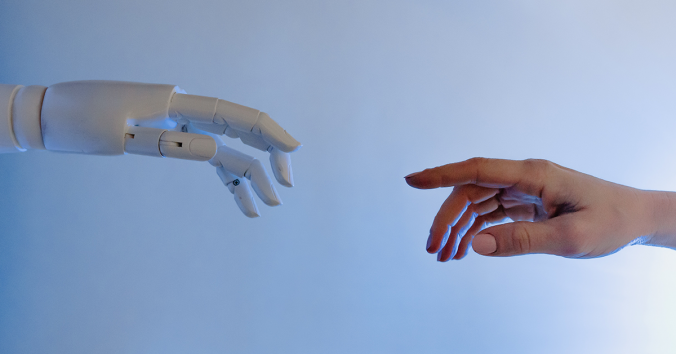Many forms of artificial intelligence could be considered objects that behave humanly. However, it does not take much for us humans to personify non-living objects. We get angry at the car that does not start or the weather that does not let us have a picnic, as if they were against us. Children spontaneously personify simple toys and can describe the relationship between geometric shapes as, “the small circle is trying to escape from the big triangle.”
We are increasingly encountering artificial intelligence designed to give a human impression, for example in the form of chatbots for customer service when shopping online. Such AI can even be equipped with personal traits, a persona that becomes an important part of the customer experience. The chatbot can suggest even more products for you and effectively generate additional sales based on the data collected about you. No wonder the interest in developing human-like AI is huge. Part of it has to do with user-friendliness, of course, but at the same time, an AI that you find personally attractive will grab your attention. You might even like the chatbot or feel it would be impolite to turn it off. During the time that the chatbot has your attention, you are exposed to increasingly customized advertising and receive more and more package offers.
You can read about this and much more in an article about human relationships with AI designed to give a human impression: Human/AI relationships: challenges, downsides, and impacts on human/human relationships. The authors discuss a large number of examples of such AI, ranging from the chatbots above to care robots and AI that offers psychotherapy, or AI that people chat with to combat loneliness. The opportunities are great, but so are the challenges and possible drawbacks, which the article highlights.
Perhaps particularly interesting is the insight into how effectively AI can create confusion by exposing us to objects equipped with human response patterns. Our natural tendency to anthropomorphize non-human things meets high-tech efforts to produce objects that are engineered to behave humanly. Here it is no longer about imaginatively projecting social relations onto non-human objects, as in the geometric example above. In interaction with AI objects, we react to subtle social cues that the objects are equipped with. We may even feel a moral responsibility for such AI and grieve when companies terminate or modify it.
The authors urge caution so that we do not overinterpret AI objects as persons. At the same time, they warn of the risk that, by avoiding empathic responses, we become less sensitive to real people in need. Truly confusing!

Written by…
Pär Segerdahl, Associate Professor at the Centre for Research Ethics & Bioethics and editor of the Ethics Blog.
Zimmerman, A., Janhonen, J. & Beer, E. Human/AI relationships: challenges, downsides, and impacts on human/human relationships. AI Ethics (2023). https://doi.org/10.1007/s43681-023-00348-8
We recommend readings





Recent Comments